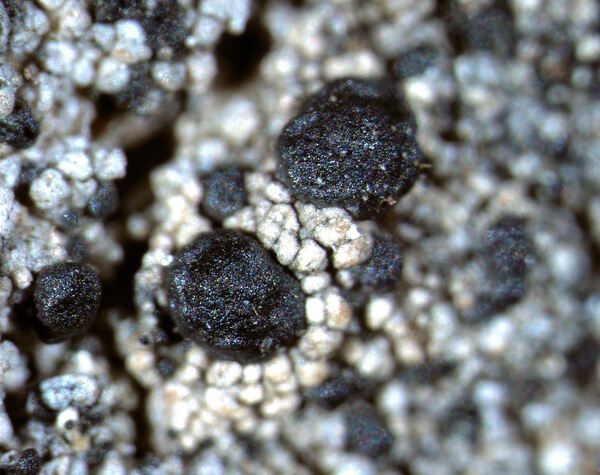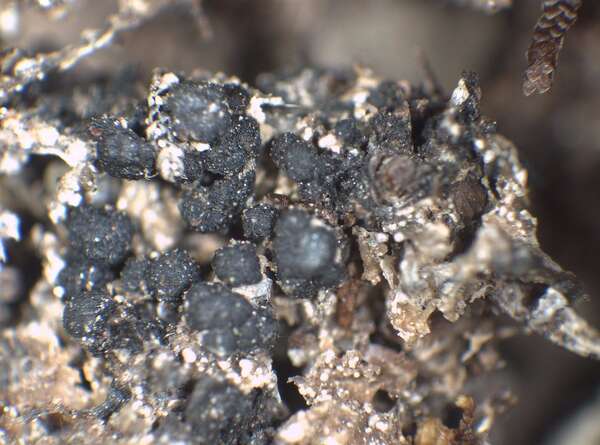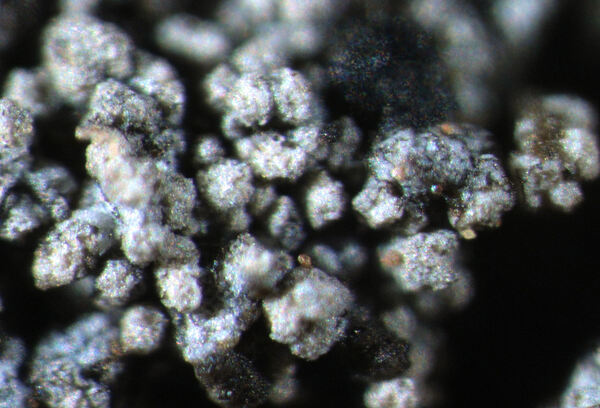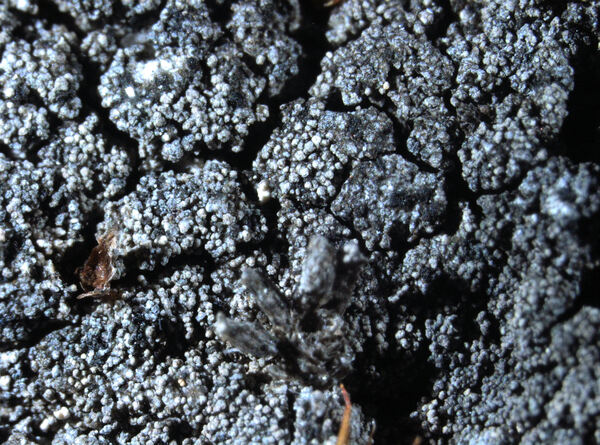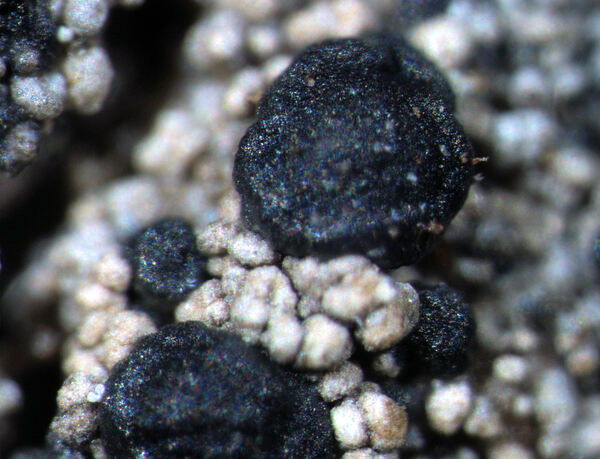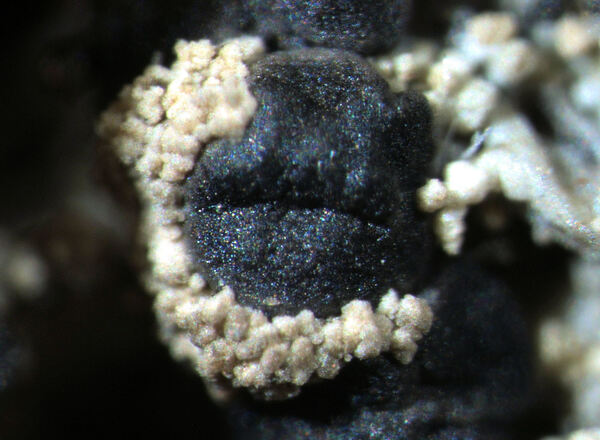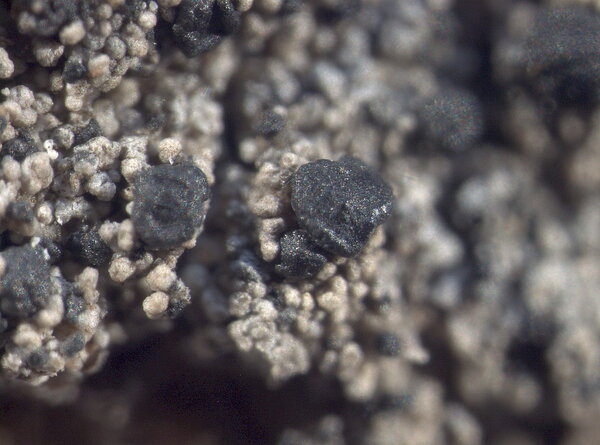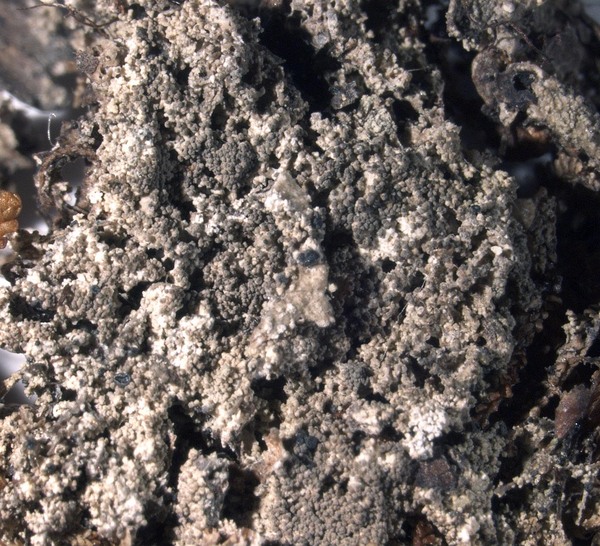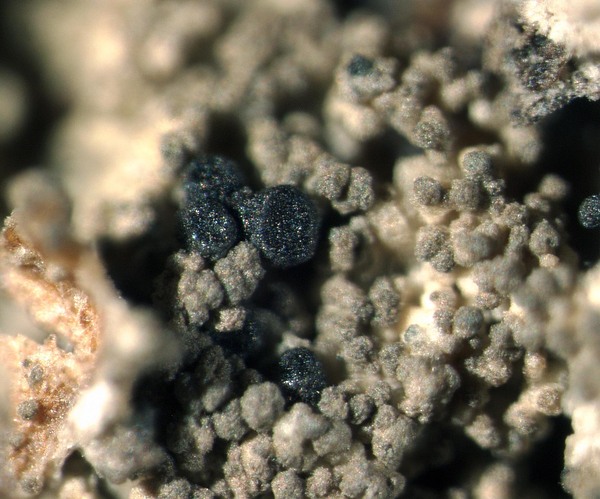Helocarpon pulverulum (Th. Fr.) Türk & Hafellner
Carinthia II, 183: 738, 1993. Basionym: Lecidea crassipes f. pulverula Th. Fr. - Lichenogr. Scand., 1: 250, 1874.
Synonyms: Helocarpon crassipes auct. eur. merid. non Th. Fr.; Micarea crassipes auct. eur. merid. non (Th. Fr.) Coppins
Distribution: N - Frl (Tretiach & Hafellner 2000), Ven (Nascimbene & Caniglia 2003c), TAA (Printzen & Rambold 1995, Caniglia & al. 2002, Nascimbene & al. 2022).
Description: Thallus crustose, episubstratic, rather thick, composed of densely packed, pulverulent granules, whitish to partially grey-brown or grey. Apothecia biatorine, black, 0.2-0.6 mm across, strongly constricted at base and sometimes substipitate, with a flat to finally convex disc, and an up to 0.05 mm thick, finally excluded proper margin. Proper exciple thin, of radially arranged hyphae, dark olivaceous green and K+ green in outer part, colourless within; epithecium green to olive and K+ green, or purple-brown and K+ purple; hymenium colourless or pale purple, c. 50 μm high, I+ blue turning red; paraphyses coherent, thin, mostly simple; hypothecium dark purplish brown, K+ slowly purplish, N+ purple-red. Asci 8-spored, cylindrical-clavate, the I+ blue tholus with a wide, I+ dark blue tube structure. Ascospores 1-celled or 1-septate, oblong to subfusiform, rarely ellipsoid, 9-17(-21) x (2.5-)3-5 μm. Pycnidia black, sessile, to 0.15 mm across, the wall c. 10-17 μm thick, green-black (K- or K+ green-intensifying) in upper part, dark red-brown (K-) in lower part; conidiogenous cells elongate-ampulliform, strongly tapered towards the neck. Conidia short-bacilliform, to 5.5 μm long. Photobiont micareoid, the cells 4-7 µm across. Spot tests: K-, C-, KC-, P-. UV-. Chemistry: thallus without lichen substances.Note: on bryophytes and plant debris on the ground and amongst rocks, in areas with siliceous substrata, with optimum near treeline; probably more widespread in the Alps. According to Hafellner (2001) all material from at least the Eastern Alps is morphologically different from H. crassipes s.str., and belongs instead to H. pulverulum.
Growth form: Crustose
Substrata: soil, terricolous mosses, and plant debris
Photobiont: green algae other than Trentepohlia
Reproductive strategy: mainly sexual
Commonnes-rarity: (info)
Alpine belt: very rare
Subalpine belt: rare
Oromediterranean belt: absent
Montane belt: absent
Submediterranean belt: absent
Padanian area: absent
Humid submediterranean belt: absent
Humid mediterranean belt: absent
Dry mediterranean belt: absent
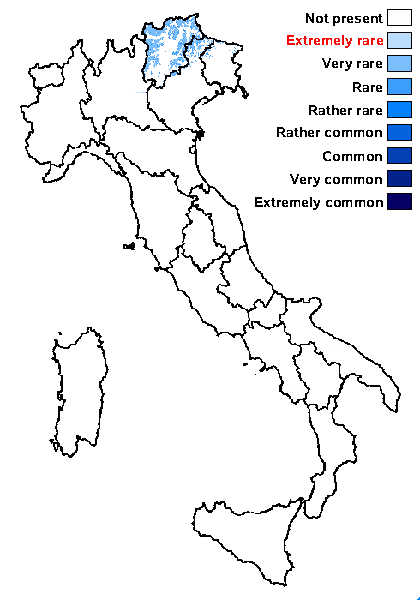
Predictive model
Herbarium samples
Growth form: Crustose
Substrata: soil, terricolous mosses, and plant debris
Photobiont: green algae other than Trentepohlia
Reproductive strategy: mainly sexual
Commonnes-rarity: (info)
Alpine belt: very rare
Subalpine belt: rare
Oromediterranean belt: absent
Montane belt: absent
Submediterranean belt: absent
Padanian area: absent
Humid submediterranean belt: absent
Humid mediterranean belt: absent
Dry mediterranean belt: absent

Predictive model
| Herbarium samples |
 INDEX FUNGORUM
INDEX FUNGORUM
 GBIF
GBIF
 DOLICHENS
DOLICHENS
